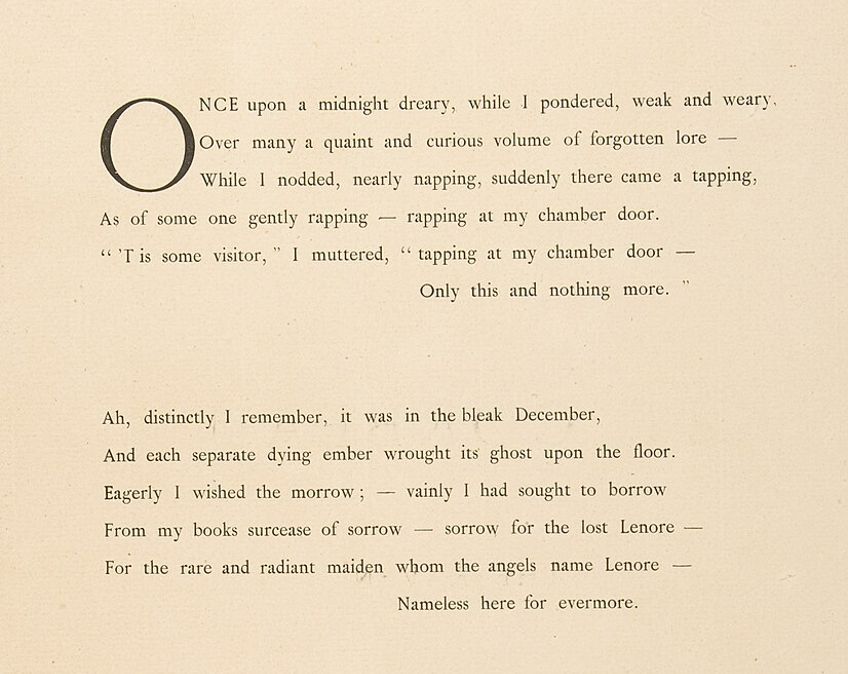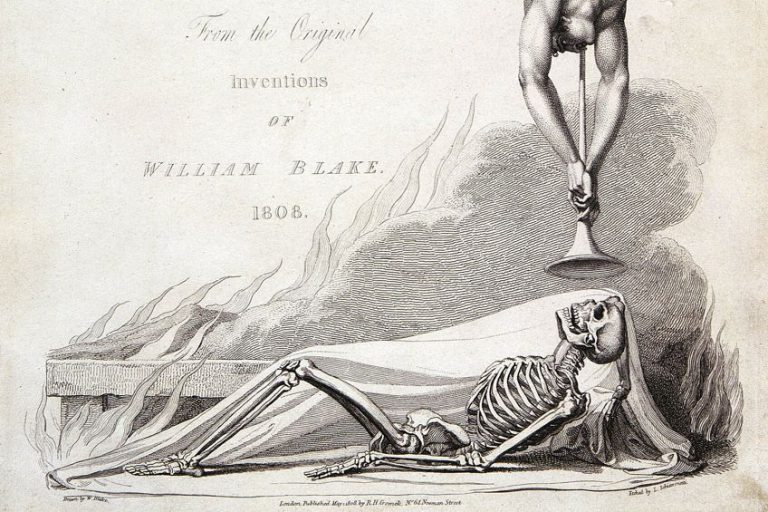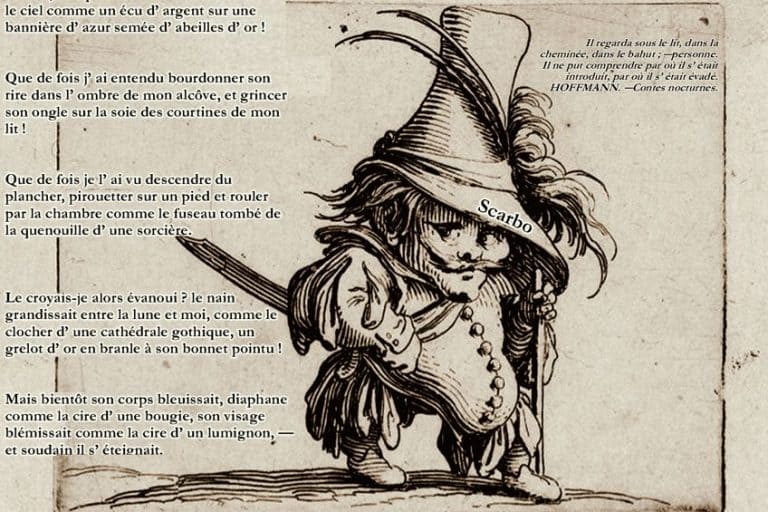Poems That Rhyme – The 15 Best Poetic Examples
There are so many poems that have been produced, and, in addition to this very obvious statement, there are many poems that rhyme in the world too. This article will look specifically at poems that rhyme. There are many different poems that rhyme, and they do so for a variety of different reasons, and that will be our focus for today. We will discover the various ways that rhyme can be used in a poem and why it may be used. That will be it for today, so if you’re in love with the idea of checking out some rhyming poems, then this is the spot for you!
A Few Poems That Rhyme
Poetry and rhyme are often seen as standing side-by-side with one another. There are, of course, poems without rhyme, but we’re not going to focus on those poems today! Instead, we’re going to be having a look at a nice collection of poems that rhyme. This collection will be far from a comprehensive one because distilling all of the poems that rhyme in the world into a single article would be impossible. There are simply too many! However, this should be a good series of poems that rhyme, and they should prove enjoyable to readers who want poems of this variety. So, let’s see that variety!

Sonnet 18: Shall I compare thee to a summer’s day (1609) by William Shakespeare
| Date Published | 1609 |
| Type of Poem | Shakespearean sonnet |
| Rhyme Scheme | ABAB CDCD EFEF GG |
| Meter | Iambic pentameter |
| Topic | Beauty |
Sonnet 18: Shall I compare thee to a summer’s day is a great example of a fairly typical type of rhyme scheme that can be found in many particularly famous poems in the English language. When it comes to poems that rhyme, it is often best to have a look at some Shakespeare. His work, for the most part, entailed the use of the Elizabethan sonnet structure (which would come to be known as the Shakespearean sonnet because of its ubiquity in his work), and it makes use of a fourteen-line structure with an alternating rhyme for three quatrains in a row before concluding with a rhyming couplet.
In terms of the effect of the rhyme, the distance between the rhyming words throughout the poem allows the final pair to stand out far more than anything that had come before and so serves as a powerful conclusive element.

To His Coy Mistress (1681) by Andrew Marvell
| Date Published | 1681 |
| Type of Poem | Carpe diem poem |
| Rhyme Scheme | AABB |
| Meter | Iambic tetrameter |
| Topic | Love and time |
To His Coy Mistress is a poem that does not follow some specific poetry structure like the last poem on the list. It makes use of its own structure, but when it comes to poems that rhyme, it has a particularly bouncing flow throughout the text. It is a lengthier poem than a sonnet, but instead of making use of an alternating structure, it incorporates a constant set of rhyming couplets. Each line rhymes with the next and then resets. This aids in producing a certain effect for the reader, because the rhyme becomes incredibly audible from the very beginning, and it never lets up.
Rather than using rhyme as a means of adding some level of punch to a particular portion of the text, the poem rather allows the constant rhyme to simply improve the general flow of the poem as a whole and therefore, in simple terms, make it sound better to the human ear.

The Rime of the Ancient Mariner (1798) by Samuel Taylor Coleridge
| Date Published | 1798 |
| Type of Poem | Lyrical ballad |
| Rhyme Scheme | ABCB |
| Meter | Iambic |
| Topic | Sailor’s life |
The Rime of the Ancient Mariner is a poem that is far lengthier than those that have been discussed above. There are many poems that rhyme in the world, and they often rhyme for a variety of reasons, but that rhyme can often allow for some certain effect to be felt. For instance, there may be a bouncier atmosphere or a means of emphasizing something. When it comes to this particular poem, the rhyme scheme is laid out in a more traditional ballad-oriented structure. This means that when it comes to the use of rhyme, the first and third lines in the poem are written to not rhyme but the second and fourth do. There is rhyme in every stanza, but the rhyme is further stretched apart.
This provides a more musical flow to the structure while also not quite emphasizing the rhyme and singling it out in any particular way.

I Wandered Lonely as a Cloud (1807) by William Wordsworth
| Date Published | 1807 |
| Type of Poem | Lyric poem |
| Rhyme Scheme | ABABCC |
| Meter | Iambic tetrameter |
| Topic | Nature |
I Wandered Lonely as a Cloud is a stranger instance of poems that rhyme because of its altered means of rhyme within a stanza. It does not follow much of a typical formula when it comes to its use of rhyme, and that’s because it has a sestet structure in which there are four lines that make use of alternating rhyme before ending on a rhyming couplet. Essentially, every stanza has two sets of rhyme that are stretched out further from one another before ending on a punching conclusive pair. This then repeats throughout the poem to produce a certain effect for the reader. There is a constant musical conclusion to each and every stanza, and this leads us straight into the next stanza where we’re able to start all over again!
It sounds good to the ear while also making use of more complex rhyming structures.

She Walks in Beauty (1814) by Lord Byron
| Date Published | 1814 |
| Type of Poem | Lyrical poem |
| Rhyme Scheme | ABABAB |
| Meter | Iambic tetrameter |
| Topic | Beauty |
She Walks in Beauty is a poem made up of several stanzas, and each of those stanzas makes use of the same alternating structure. However, the rhyme is stretched across the stanza, so instead of it being something like ABABACDCDC, it repeats those same rhyming words as ABABAB. We receive three rhymes per stanza in an alternating capacity. When it comes to alternating rhyme, it can often be a lot harder to hear it than it is to hear something like paired rhyme, but this is also typically because the alternation only has one iteration. When it is allowed to continue for longer, we can better hear the rhyme in question, and this provides a greater overall musical quality to the rhyme as a whole.
This kind of extension of rhyme is not seen quite as often as a more standard ABABCDCD.

Ozymandias (1818) by Percy Bysshe Shelley
| Date Published | 1818 |
| Type of Poem | Sonnet |
| Rhyme Scheme | ABABACDC EDEFEF |
| Meter | Loose iambic pentameter |
| Topic | The dissolution of power |
Ozymandias is a sonnet, but it’s also not a typical sonnet. Instead, the poem opens by appearing to be a Shakespearean sonnet with an alternating structure and the use of strong enjambment that makes the rhyme appear less prominent, but instead of proceeding towards the Shakespearean conclusion with its final rhyming couplet, we are instead directed toward an altered rhyme scheme that has a more Petrarchan structure. However, this also makes that the use of rhyme becomes far less prominent, and when reading Ozymandias, you may be forgiven for not much noticing the use of rhyme, because the poem can often read like something that heavily de-emphasizes rhyme.
This helps to set the poem apart from many other sonnets and makes it one of the most valuable examples of Romantic poetry.

Ode on a Grecian Urn (1819) by John Keats
| Date Published | 1819 |
| Type of Poem | Ode |
| Rhyme Scheme | ABABCDEDCE |
| Meter | Iambic pentameter |
| Topic | Art |
Ode on a Grecian Urn is a poem with a more unusual structure. It opens with typical alternating rhyme but soon changes into a kind of stunted alternating rhyme. The use of rhyme does not become quite as prominent as it could have been by having rhymed segments far apart from one another. The beginning of each stanza allows for a more musical flow while it then becomes less prominent as each stanza continues.
This is an interesting choice for the use of rhyme in a poem and one that allows the message of the poem, in the latter half of each stanza, to stand out more clearly as opposed to a focus on a more musical quality that may be favored in many other examples of poems that rhyme.

The Raven (1845) by Edgar Allan Poe
| Date Published | 1845 |
| Type of Poem | Narrative poem |
| Rhyme Scheme | ABCBBB |
| Meter | Trochaic octameter |
| Topic | Loss |
The Raven is a poem that goes a little more intense than many other poems that rhyme. You see, when it comes to the use of rhyme in poetry, The Raven is simultaneously a masterclass and a highly unique and difficult-to-replicate example. The poem has a structure that would, in its first three lines, seem less like it is rhyming until the last three lines hit you with one rhyme after another. However, the reason this poem is such a phenomenal instance of rhyme in poetry is because it makes use of extensive internal rhyme as well as end rhyme. For instance, the third line may not have anything that rhymes with it in the next line’s end rhyme, but it does have rhyme within its own line and the next line. For instance, a word that rhymes with “tapping” is used five times in the first stanza.
This gives it an intense level of musicality that is unrivaled in most examples of poems that rhyme in the world.

The Concord Hymn (1848) by Ralph Waldo Emerson
| Date Published | 1848 |
| Type of Poem | Hymn |
| Rhyme Scheme | ABAB CDCD EFEF GHGH |
| Meter | Iambic pentameter |
| Topic | Commemoration of the Battle of Concord |
The Concord Hymn is a poem that makes use of a series of alternating rhymes throughout the poem. However, each of these alternating rhymes does not proceed into the next set of alternating rhyme. In essence, each quatrain has its own set. This means that we cannot often particularly easily hear the rhyme unless we’re really paying attention to it. This de-emphasizes the use of rhyme while still retaining it as a general framing mechanism. We know that the rhyme is there even if we cannot hear it quite as clearly as we may hear rhyme in some other instances of rhyming poems.
A poem does not need to make use of intensive rhyme to still incorporate rhyme, even if the rhyme feels less musical than it could otherwise feel in other places.

Because I Could Not Stop for Death (1890) by Emily Dickinson
| Date Published | 1890 |
| Type of Poem | Lyric poem |
| Rhyme Scheme | ABCB |
| Meter | Variable |
| Topic | Death |
Because I Could Not Stop for Death is a good example of the way that Emily Dickinson made use of rhyme. She would often incorporate slant rhyme into her works, and this means that some lines would rhyme, but not quite. It’s an almost rhyme, and this poem makes use of an ABCB structure in which the second and third lines rhyme with one another while the others do not. This produces a more disjointed sound that does not quite have the usual level of musicality that one might expect out of something that makes use of a more traditional rhyme.
However, it does still have a more ballad-like structure, and this allows it to have a strong flow even if it may not have the intense level of rhyme that can be found in some of the other poems on this list.

We Wear the Mask (1895) by Paul Laurence Dunbar
| Date Published | 1895 |
| Type of Poem | Rondeau |
| Rhyme Scheme | Predominantly AABB |
| Meter | Iambic tetrameter |
| Topic | African American experience |
We Wear the Mask is a poem that makes use of a structure known as a rondeau. This is a form that makes use of a fixed arrangement of lines and rhymes, and this is one of the ways in which poems that rhyme can be used. There are certain structures within poetry that are incredibly formalistic in their presentation. While something like a sonnet has a particular rhyme scheme, the level of specification to be found in a rondeau is even more intensive for a poet to produce. This prescribed rhyme also allows the poet to follow a set pattern that needs to be maintained throughout, and this can actually show a level of discipline through a need to cling to a very specific type of structure.
While the structure does have a flowing feel to it, the fact that there is such specificity in this type of rhyme structure does also mean that rhyme itself can be used as a confined system to show discipline in poetic composition.

The Highwayman (1906) by Alfred Noyes
| Date Published | 1906 |
| Type of Poem | Modern ballad |
| Rhyme Scheme | AABCCB |
| Meter | Variable |
| Topic | Criminal life and love |
The Highwayman is a poem with a rather interesting approach to rhyme. It uses a paired approach in the beginning, but then leaves one word hanging as it instead jumps into an enclosed rhyme. This gives it a kind of musicality in the beginning, a more stunted feeling in the middle, and a greater bounce in the second half. This is a unique method not found in many poems that rhyme. However, as this poem is a lengthier narrative poem, it was best to create a new kind of rhyme and rhythm to the poem.
The ultimate rhythm that is produced through the use of this rhyme scheme and the alternating metrical structures that the poem uses, adds to a highly musical poem that is pleasant to listen to even if it reads a little differently to many more traditionally arranged poems.

Still will I harvest beauty where it grows (1920) by Edna St. Vincent Millay
| Date Published | 1920 |
| Type of Poem | Sonnet |
| Rhyme Scheme | ABBAABBA CDECED |
| Meter | Iambic pentameter |
| Topic | Beauty |
Still will I harvest beauty where it grows is a poem that incorporates a Petrarchan-style sonnet. It is not quite traditional throughout, but the first octave (or first eight lines) does follow the standard structure by having a series of enclosed rhyme. This is arranged as ABBA. When this structure is used, we can see that there is significant distance between the first and fourth lines but a paired structure for the second and third lines. However, thanks to the use of two of these quatrain structures in a row, we are then treated to a second paired structure as the ABBA is followed by an ABBA. However, the final section of the poem uses something closer to alternating rhyme, but it has broken its own structure by not quite committing, and this shows something else that poems that rhyme can do. We can break a structure and change the way that rhyme is used.
This can be used to emphasize something or to produce some kind of an effect for the reader in question.

Nothing Gold Can Stay (1923) by Robert Frost
| Date Published | 1923 |
| Type of Poem | Lyric poem |
| Rhyme Scheme | AABB |
| Meter | Iambic trimeter |
| Topic | Beauty and impermanence |
Nothing Gold Can Stay is not a very long poem, and in terms of poems that rhyme, it has a particularly simplistic rhyme scheme. Each line is paired with the next to create a paired structure. However, something that differentiates this poem from some other types of poems that incorporate a rhyming pair structure is the length of each line. The poem follows an iambic trimeter metrical structure, and this means that there are only six syllables per line. This is in juxtaposition to a lot of rhymed verse in English, because many instances make use of ten syllables per line. When the number of syllables is reduced, we reach each rhyme significantly faster than we would if there were more syllables in each line.
This effectively means that we’re being hit with a constant rhyme one after the other. This provides an immense feeling of rhyming musicality to the poem.

The Acrobats (1974) by Shel Silverstein
| Date Published | 1974 |
| Type of Poem | Humorous poem |
| Rhyme Scheme | Variable |
| Meter | Anapestic trimeter |
| Topic | Acrobatics |
The Acrobats is a short and sweet poem, and the last of our poems that rhyme on this particular list (although there are, of course, so many more examples out there to choose from if you decide to take a gander!). This poem, like many Silverstein poems, was aimed more at children than adults, and as such, it has a more simplistic rhyme scheme. In this case, the rhyme is arranged as a series of distinct rhymes with short lines, such as alternating lines in which every second line does not rhyme and so it reads as if it was paired, before ending on a series of four lines in a row that all rhyme with one another. This overwhelming level of rhyme allows the poem’s words to roll off the tongue so nicely, and it simply sounds delightful to say aloud.
This is often great when it comes to children’s poetry of any description because you want something entertaining, and more rhyme is always more entertaining than less of it!

Poems That Do Not Rhyme
Today, we have laid ourselves firmly at the feet of poems that rhyme. However, do poems have to rhyme? We all generally know that the answer to this is a resounding, “What? No! They don’t have to rhyme!” However, there is often that part of us, however small, that reminds us that a poem rhymes. It’s often the first thing that many people think of when they think of a poem in the first place. It is one of the most recognizable aspects of poetic language, more so than the use of meter or specific typographies. We even classify many types of poetry according to their rhyme schemes! Think of limericks, sonnets, or the traditional ballad. These often make use of very specific rhyme schemes.
They would also often have specific numbers of lines, but it’s the rhyme scheme that generally sets them apart.
So, we have spent all of this article on poems that rhyme, but before we close out, it is good to remember that a poem does not need to rhyme. That is not a requirement for a poem at all. In fact, something like a sonnet could have a non-rhymed version. A poet would simply focus on the fourteen-line structure and either have no rhyme or their own made-up version. Free verse poetry is often seen as a very contemporary form, and it is often characterized by its lack of rules, including the general lack of rhyme. However, there are forms that are seen as far older, such as blank verse poems like Paradise Lost that do not use rhyme yet are seen as worthy and valuable poems.

Ultimately, while poems that rhyme are often some of the most enjoyable to read simply by virtue of having a certain rhythm and flow to them, there are so many other poems out there that are worth a read even if you like these more musical formal aspects. Have a look at all the free verse poems out there, the blank verse poems, and every other non-rhyming variety. Rhyme may be fun, but there’s a whole lot more that can be done with poetry when it is not confined to a certain form and structure.
We have gone through a nice list of rhyming poems as well as a final rant about non-rhyming poetry, and so with all that said and done, we have officially arrived at the conclusion of this article. We have examined 15 poems that rhyme with a brief focus on how they make use of rhyme in the first place. There are all sorts of different varieties of rhyme, and while this is far from a comprehensive list, it should provide at least something of a jumping-off point for those who want to learn about more poems that rhyme. Thankfully, poems that rhyme are probably the easiest to find. So, type that into a search engine and be on your way!
Frequently Asked Questions
What Is a Poem That Rhymes?
This is a preposterously broad question that encompasses the most famous poetry. While there certainly are many instances of poems that do not use rhyme, such as free verse poetry, we tend to associate rhyme with poetry on a rather fundamental level. So, a poem that rhymes is simply a poem that makes use of rhyme in some way. This could mean that it uses end rhyme, slant rhyme, internal rhyme, and so on. This is a form of repetition that entails the repeated use of similar sounds, and many poems tend to have it by default.
Do Poems Have to Rhyme?
A poem does not need to rhyme. However, there are some varieties of poems that require rhyme. For instance, a Shakespearen sonnet has a particular rhyme scheme that must be followed. If a poem does not use an ABABCDCDEFEFGG rhyme scheme, then it cannot be a Shakespearean sonnet. However, if it simply uses fourteen lines, but does not have a particular rhyme, then it is a sonnet, just not a Shakespearean sonnet. So, a poem does not require rhyme, but certain types do.
Why Do Poems Use Rhyme?
There are many reasons why a poem might make use of rhyme. Rhyme can create a certain rhythmic flow to a poem, and this means that it, quite simply, sounds nice! That’s all that is required sometimes. However, a rhyme can also be used to create a certain level of structural unity within a poem or to aid in the emphasis of certain elements. For instance, the rhyming couplet at the end of a Shakespearean sonnet serves as a powerful final point in the poem that emphasizes some conclusion that the poem wishes to express to the reader. This should indicate that the purpose of rhyme in a poem can vary greatly based on the context of the poem in question.
Which Poets Made Use of Poems That Rhyme?
Most poets have likely made use of rhyme. So, this question is another of the hard-to-answer questions. Poets like William Shakespeare and Edgar Allan Poe were notable for their highly rhythmic writing style, while poets like Robert Frost or Walt Whitman were generally not as well known for rhyme but did make use of it. Rhyme can be used in a highly structured way, like Shakespeare, or very seldom, like Whitman, but those like him still make use of it on occasion.
What Are the Most Famous Poems That Rhyme?
This is an almost impossible question to actually answer because poems that rhyme constitute the majority of poetry, especially from certain older periods in which rhyme was often seen as fundamental. There is more contemporary poetry without rhyme, but asking this is a very tough one! Some examples of immensely famous poems that make use of rhyme include I Wandered Lonely as a Cloud (1807) by William Wordsworth, Ozymandias (1818) by Percy Bysshe Shelley, and The Raven (1845) by Edgar Allan Poe. However, only focusing on some of the most famous poems that rhyme is immensely exclusionary as there is so much that is being left on the cutting room floor. Our list above should provide a few good examples though.
Justin van Huyssteen is a freelance writer, novelist, and academic originally from Cape Town, South Africa. At present, he has a bachelor’s degree in English and literary theory and an honor’s degree in literary theory. He is currently working towards his master’s degree in literary theory with a focus on animal studies, critical theory, and semiotics within literature. As a novelist and freelancer, he often writes under the pen name L.C. Lupus.
Justin’s preferred literary movements include modern and postmodern literature with literary fiction and genre fiction like sci-fi, post-apocalyptic, and horror being of particular interest. His academia extends to his interest in prose and narratology. He enjoys analyzing a variety of mediums through a literary lens, such as graphic novels, film, and video games.
Justin is working for artincontext.org as an author and content writer since 2022. He is responsible for all blog posts about architecture, literature and poetry.
Learn more about Justin van Huyssteen and the Art in Context Team.
Cite this Article
Justin, van Huyssteen, “Poems That Rhyme – The 15 Best Poetic Examples.” Art in Context. January 16, 2024. URL: https://artincontext.org/poems-that-rhyme/
van Huyssteen, J. (2024, 16 January). Poems That Rhyme – The 15 Best Poetic Examples. Art in Context. https://artincontext.org/poems-that-rhyme/
van Huyssteen, Justin. “Poems That Rhyme – The 15 Best Poetic Examples.” Art in Context, January 16, 2024. https://artincontext.org/poems-that-rhyme/.










Thank you for this thorough list!